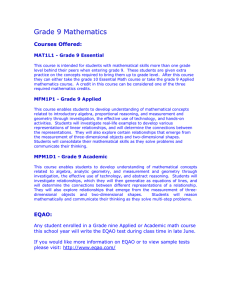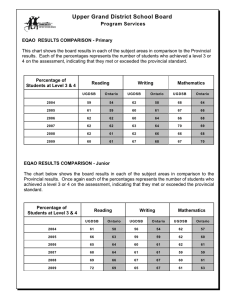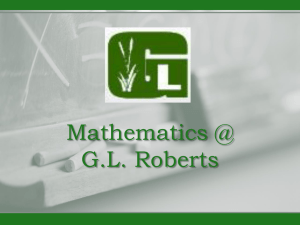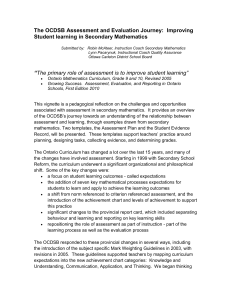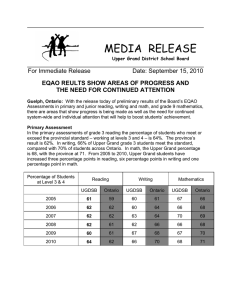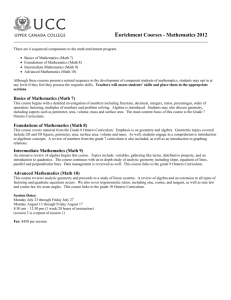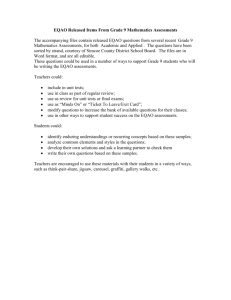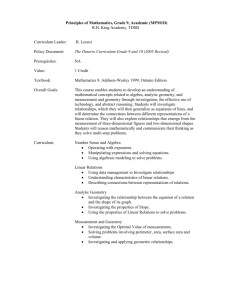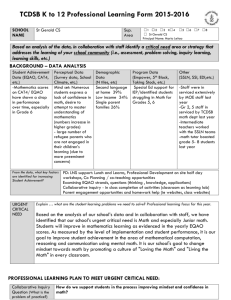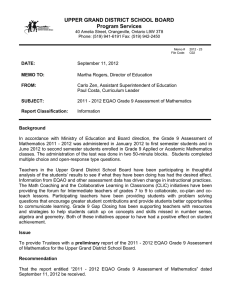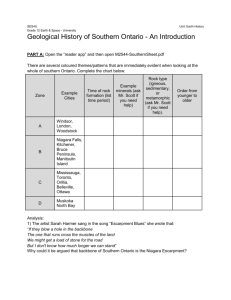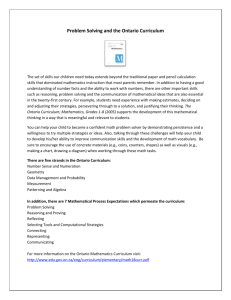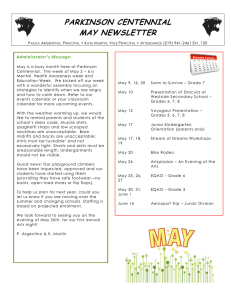SJAM Week 6 Junior Math Challenge
advertisement
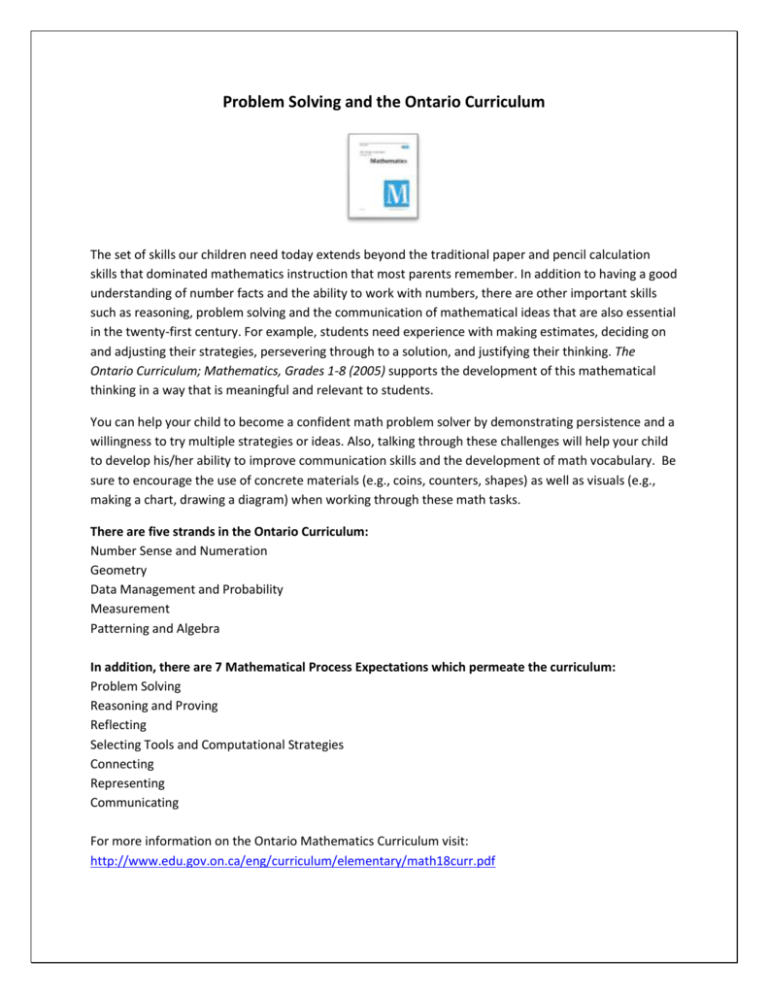
Problem Solving and the Ontario Curriculum The set of skills our children need today extends beyond the traditional paper and pencil calculation skills that dominated mathematics instruction that most parents remember. In addition to having a good understanding of number facts and the ability to work with numbers, there are other important skills such as reasoning, problem solving and the communication of mathematical ideas that are also essential in the twenty-first century. For example, students need experience with making estimates, deciding on and adjusting their strategies, persevering through to a solution, and justifying their thinking. The Ontario Curriculum; Mathematics, Grades 1-8 (2005) supports the development of this mathematical thinking in a way that is meaningful and relevant to students. You can help your child to become a confident math problem solver by demonstrating persistence and a willingness to try multiple strategies or ideas. Also, talking through these challenges will help your child to develop his/her ability to improve communication skills and the development of math vocabulary. Be sure to encourage the use of concrete materials (e.g., coins, counters, shapes) as well as visuals (e.g., making a chart, drawing a diagram) when working through these math tasks. There are five strands in the Ontario Curriculum: Number Sense and Numeration Geometry Data Management and Probability Measurement Patterning and Algebra In addition, there are 7 Mathematical Process Expectations which permeate the curriculum: Problem Solving Reasoning and Proving Reflecting Selecting Tools and Computational Strategies Connecting Representing Communicating For more information on the Ontario Mathematics Curriculum visit: http://www.edu.gov.on.ca/eng/curriculum/elementary/math18curr.pdf The challenges for this week are focused on skills found within the Patterning and Algebra Strand. Specifically, the junior expectations include: Grade Four: Connect each term in a growing or shrinking pattern with its term number and record the patterns in a table of values that shows the term number and and the term Grade Five: Build a model to represent a number pattern represented in a table of value that shows the term number and term value Grade Six: Determine a term, given its term number, by extending growing and shrinking patterns that are generated by adding or subtracting a constant, or multiplying or dividing by a constant, to get the next term Here are the junior math problem solving challenges for this week: Grade Four *Create a table of values to represent the above pattern. Describe the pattern using numbers and words. What is the 7th term? How do you know? Represent this same pattern in a different way. Think about: What language can I use to describe the pattern (e.g., shrinking, growing, repeating)? How can I show this same pattern in a different way? *Note to Parents – A Table of Values is a chart which shows the pattern data in a manner which helps students to see relationships between the Term Number (e.g., first pattern example shown above) and the Term Value (e.g., the number of corresponding blocks related to a term number). Grade Five Use manipulatives (e.g., items such as toothpicks, coloured blocks) to build models which represent the number pattern below: Term Number 1 2 3 4 5 Term Value 1 4 7 10 ? If the pattern is extended, what is the value of the 20th term? How do you know? Think about: How can I describe the relationship between the term number and term value? *Grade Six Two patterns are shown below: If both patterns continue in the same way, which pattern will reach a term with a value of 23 first? Justify your answer. Think about: How can I organize my work effectively to communicate my answer? How can I prove that my answer is correct? This grade six question is taken from the released 2013 – 2014 EQAO Assessment questions and is an example of the problem solving questions our grade six students will be asked to solve during EQAO. Try this problem with your child and afterwards take a look at the two sample responses below. These do not represent the only way to show the answer, but do provide examples of student responses at level three and level four. Level 3 Response Level 4 Response
